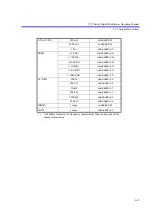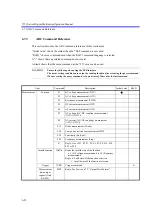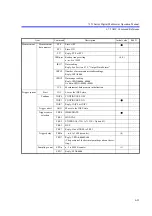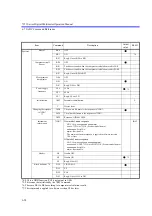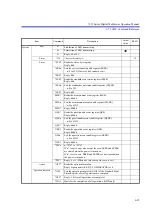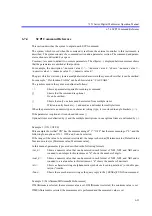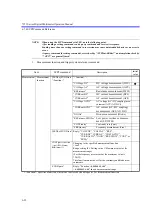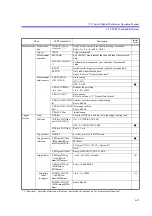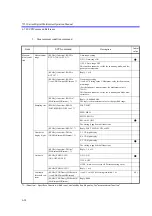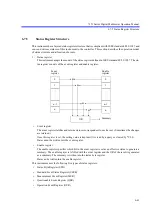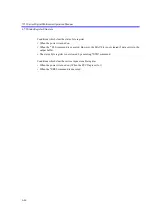
7351 Series Digital Multimeter Operation Manual
6.7.4 SCPI Command Reference
6-31
6.7.4
SCPI Command Reference
This section describes the syntax to explain each SCPI command.
The syntax, which is used when the command is sent from the external controller to this instrument, is
described. The syntax consists of a command section and a parameter section. The command and param-
eter sections are delimited by a space.
Commas (,) are used to delimit two or more parameters. The ellipsis (...) displayed between commas shows
that the parameters are omitted at that position.
For example, the description
"
<numeric value 1>
"
,...,
"
<numeric value 4>
"
shows
"
<numeric value 1>,
<numeric value 2>, <numeric value 3>, <numeric value 4>
"
.
The part, which is written by lowercase alphabetical characters in the syntax, shows that it can be omitted.
For example,
"
:CALibration:CABLe
"
can be abbreviated to
"
:CAL:CABL
"
.
The symbols used in the syntax are defined as follows:
< >
Shows a parameter required for sending a command
[ ]
Shows that the command is optional.
It can be omitted.
{}
Shows that only one item need be selected from multiple items.
|
Written in curly brackets {..} and used as a delimiter for multiple items.
When the parameter is a numeric type or a character (string) type, it is enclosed in angle brackets (< >).
If the parameter is optional, it is enclosed in braces { }.
Optional items are delimited by (|) and the multiple descriptions in one optional item are delimited by (,).
Example 1: {ON,1|OFF,0}
This example shows that “ON” has the same meaning of “1”, “OFF” has the same meaning of “0”, and the
following four options: ON, 1, OFF, and 0 can be selected.
If the range of the value to be entered is restricted, the range is shown as [Minimum value| Default value|
Maximum value] or [Minimum value| Maximum value].
In this manual, parameter types are described in the following formats:
<int_d>
Shows a numeric value that can be entered in each format of NR1, NR2, and NR3 and is
rounded to an integer in this instrument. “d” shows the number of digits.
<real_d>
Shows a numeric value that can be entered in each format of NR1, NR2, and NR3 and is
rounded to a real number in this instrument. “d” shows the number of decimals.
<str>
Shows a character string or alphanumeric symbols enclosed in quotation (') or double quo-
tation (") marks.
<func>
Shows the same character string as the query reply to the [:SENSe]:FUNCtion command.
Example 2: {MAXimum|MINimum|MEASurement}
If MAXimum is selected, the maximum value is set. If MINimum is selected, the minimum value is set.
If MEASurement is selected, the measurement is performed and the measured value is set.





